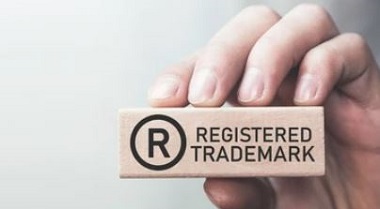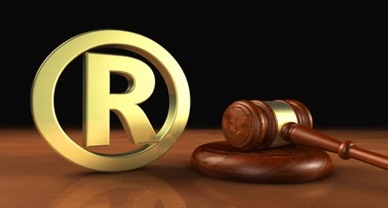Critical Overview Of The Effect Of Non-Use Of Trademarks
Introduction
A trade mark provides protection to its owner by securing the owner’s exclusive right to use it or by granting another party permission to do so in exchange for money. Despite the fact that the duration of protection varies, a trademark can be renewed in perpetuity by paying additional fees after the first term has expired. In a larger sense, trademarks stimulate initiative and entrepreneurship by providing their owners with renown and financial reward. Trademark protection also prevents unscrupulous rivals, such as counterfeiters, from using similar unique marks to market inferior or unrelated goods or services. Promoting global trade, the system enables anybody with initiative and skill to manufacture and sell goods and services under the most ethical standards.[i]
[image Sources : Shutterstock]
Properly called, a trademark denotes origin or acts as a flag of origin since its primary function is to identify the source or origin of products or services. In other words, trademarks identify a certain corporation as the source of products or services. This form of trademark utilisation is known as trademark use. A registered trademark confers exclusive rights.[ii]
Rectification of Registers in case of Non-Use
It should be emphasised that, assuming there are no other trademark objections, trademark rights often derive from the use of a sign in relation to certain products or services, or from the preservation of exclusive rights over that sign. In India, Section 47[iii] of the Trademarks Act defines two situations under which a registered trademark may be revoked:
- If it can be shown that the trademark was registered without a bona fide purpose to use it, the registration will be invalidated. When doing trademark searches, we frequently encounter several applications that have been filed in all 45 classes, despite the fact that the mark is only utilised in one or two classes. This is a defensive registration, and the Supreme Court has repeatedly ruled that such registrations should not be promoted.
- If the trademark has not been used for a continuous period of five years from the date of registration and three months previous to the filing of the application for registration, the registration will be cancelled. Therefore, if the mark has not been used for five years and three months, any aggrieved party may initiate rectification actions.
Therefore, in the first type of case, if someone can demonstrate that the applicant did not intend to actually use the mark, they may file a petition to have it cancelled; in the second type of case, even if there was some initial usage, if the mark was not used continuously for five years after its registration, an application for rectification may be filed.[iv]
Non-Use Cancellation
In India and other countries, trademark non-use cancellation refers to the removal of a registered trademark from the Register of Trade Marks based on the trademark’s non-use in relation to the goods or products specified in the registration application for five years after its registration and three months prior to that date. This is also known as the removal of a trademark from the registry for lack of usage. Section 47 of the Indian Trade Marks Act of 1999 governs the withdrawal of any registered trademark from the Register of Trademarks only on the basis that the brand has not been used in connection with the specified goods or products within the stipulated time period.7
Effect of Non-Use
If the registered trademark has not been utilised in good faith, it may be revoked for non-use. Concerning the removal of a registered trademark from the trademark registration, Section 47 of the Trademarks Act of 1999 outlines two fascinating scenarios. Clause 2 of the same Act governs the cancellation of a trademark following at least five years of inactivity. This period is calculated from the date of registration up to three months previous to the filing of the removal application. On form TM-1, which provides information about a trademark, the status of the trademark’s use must be specified. According to section 46 of the Act, a number of trademarks are registered as “intended to be used.” This knowledge is accessible to everyone and is commonly relied upon by individuals. As stated previously, if the mark is not used within five years, it is subject to cancellation.[v]
Rectification Proceeding
A “person aggrieved” may make a request for cancellation or withdrawal of a registered trademark based on non-use. If the previous registration has been posted on the Register for more than five years, the defendant in opposition proceedings may require proof of actual usage. The concerned zonal registrar of trade marks or the Intellectual Property Appellate Board must receive any requests for corrections to the register of trademarks or for the removal of any registered brand from the register (IPAB).[vi]
Once opposition proceedings have been initiated and it has been determined, based on the facts and circumstances, that the trademark owner has not used the mark for the requisite period of time, he has no remedy. However, if no application for rectification for the removal of the trademark is made by a dissatisfied party and the registered proprietor starts using the trademark legitimately after the required five-year period, nothing prevents the registered proprietor from registering a trademark even if it hasn’t been used legitimately for the required amount of time.[vii]
Conclusion
Trademarks play a crucial role in identifying a company as the source of goods or services. They provide protection to their owners by securing exclusive rights to use the mark or by granting permission to others to do so in exchange for money. The Indian Trade Marks Act of 1999 addresses the removal of registered trademarks from the Register of Trade Marks if they have not been used continuously for five years and three months. A “person aggrieved” may also make a request for cancellation or withdrawal of a registered trademark based on non-use. It is important to note that trademark rights often derive from the use of a sign in relation to certain products or services, or from the preservation of exclusive rights over that sign. Overall, trademark protection promotes initiative and entrepreneurship, prevents unscrupulous rivals from using similar marks, and promotes global trade under ethical standards.
Author: Sanskar Pandey, a student of National Law University & Judicial Academy, Assam, in case of any queries please contact/write back to us at support@ipandlegalfilings.com or IP & Legal Filing.
References
[i] Trademark Non-Use Cancellation, available at http://www.trademarksindia.net/trademark-non-usecancellation.php, last seen on 05/05/2020 S.47, Indian Trade Marks Act of 1999
[ii] World Intellectual Property Organisation (1997). Introduction to Intellectual Property: Theory and Practice. Kluwer Law International. p. 23
[iii] S. 47, The Trade Marks Act, 1999.
[iv] https://selvams.com/rectification-of-trademark-in-india-on-grounds- of-non-use/, last seen on 05/05/2020. 7 Trademark Non-Use Cancellation, available at http://www.trademarksindia.net/trademark-non-usecancellation.php, last seen on 05/05/2020 S.47, Indian Trade Marks Act of 1999.
[v] Tehemtan N. DARUWALLA, the requirement of genuine use of trademarks for maintaining protection, Report Q218, pages 4-9
[vi] Rectification Proceedings, available at https://selvams.com/rectification-of-trademark-in-india-on-groundsof- non-use/, last seen on 09/05/2020.
[vii] Majumdar and Co., Limits on Effect of Registered Trade Mark, Report A229, National Seminar on Trademark.



